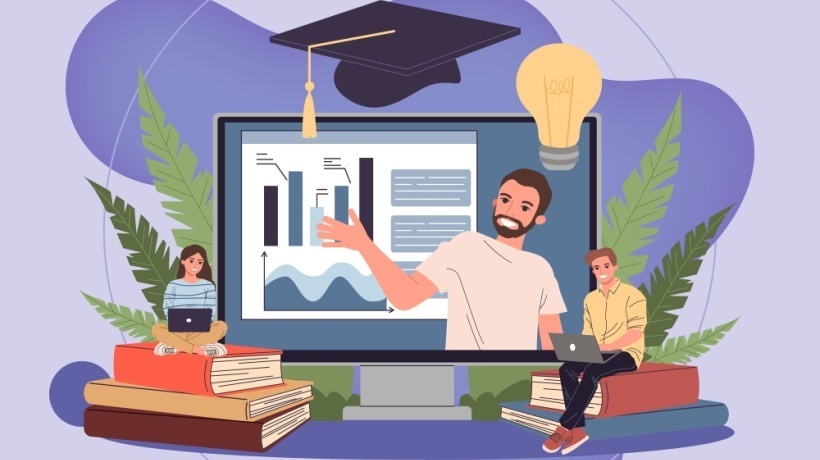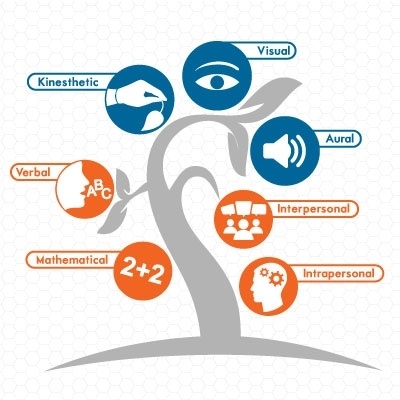Adapting Content To Different Learning Styles
By acknowledging differences in learning style, educators and Instructional Designers can create eLearning materials that are engaging and accessible, ensuring that every learner can interact with and benefit from the educational content. This article explores various strategies for designing effective eLearning materials tailored to different learning styles and offers best practices for creating accessible resources.
Creating effective eLearning content ensures that all learners can interact with and benefit from it. Understanding how people learn differently is essential for developing effective eLearning materials.
Visual learners benefit from diagrams, charts, and videos. Also, written instructions are important because they like to see the information and understand the connections between ideas. Learning by reading and writing is preferred by those who learn best through texts, taking notes, and drafting essays.
Use visual tools like infographics, charts, and diagrams to help explain important ideas to visually oriented learners. Videos can be used to illustrate difficult concepts and give examples visually, and color coding can be used to draw attention to specific details and distinguish between various themes. Flowcharts and mind maps help visual learners understand concept connections.
Provide access to pertinent podcasts and webinars, and use audio narrations and clips to enhance the learning experience for auditory learners, and provide discussion boards as a means of fostering interaction. Sound effects and background music can help improve the educational process.
How Can You Create Accessible eLearning Materials?
Accessible eLearning materials help ensure that all learners, regardless of ability, may interact with and profit from the information. The following are some essential techniques to aid you in creating inclusive and accessible eLearning content:
Make Your Language Simple And Clear
Write in an understandable, straightforward style to make your information easy to read. Use simple phrases instead of jargon and technical vocabulary. This aids learners and nonnative speakers.
Offer Text Substitutions
Make sure there are text equivalents for every visual piece of material, including diagrams, videos, and photographs. For photographs, use a caption that describes the image; for audio and video content, offer transcripts. This helps learners who have hearing impairments and those who use screen readers.
Make Sure Keyboard Navigation Is Accessible
Create your eLearning resources with keyboard navigation in mind. For learners who might not be able to use a mouse, this is essential. Make sure that keyboard shortcuts are available to access any interactive components, including buttons and links.
Use Legible And High Contrast Fonts
Select color schemes with high contrast to draw attention to text and other critical features. Make sure you can change the text size and choose readable fonts. This is beneficial for learners who have trouble reading small print or who have visual impairments.
Offer Various Modes Of Representation
Provide material in a variety of forms to accommodate different learning styles. Utilize a blend of written, spoken, and visual components to guarantee that every learner has access to the information in the way they want.
Design With Mobile Usability In Mind
Make sure your online course materials are available on several platforms, such as tablets and smartphones. This guarantees the flexibility and adaptability of your products and enables learners to access knowledge while on the road.
Add Interactive Components
To keep learners interested and provide them with practical learning experiences, include interactive components like polls, quizzes, and simulations. Make sure assistive devices can be used to navigate these elements.
Give Clear Feedback And Instructions
Producing quality eLearning content is an ongoing process. All tasks and activities should have clear directions and prompt, helpful feedback should be given. This enables learners to understand expectations and opportunities for growth. To keep improving your abilities, keep up with the most recent eLearning trends and best practices.
Assess And Update Content Regularly
Evaluate your eLearning materials regularly with real users. Revise your material in light of user feedback and any changes in accessibility guidelines.
Final Words
A more thorough learning experience may be produced by combining different learning methods. Incorporate textual, auditory, and visual components to simultaneously meet the needs of many learning styles. For the benefit of learners who use screen readers, provide captions and transcripts for audio and video material. Let learners change the text size to fit their requirements, and provide descriptive alt text for images. Make the material simple and easy to understand for all learners by using straightforward language.
A deliberate and inclusive strategy is needed to create eLearning content that works for various learning styles. You may produce interesting and easily accessible information that caters to every learner's requirement by considering the varied learning styles of individuals and using various techniques and resources. It is necessary to regularly seek feedback and make modifications to guarantee the effectiveness and pertinence of your eLearning material. By adhering to these standards, you may produce eLearning materials that inspire, engage, and educate learners of all ages and backgrounds. Have fun with your teaching!










